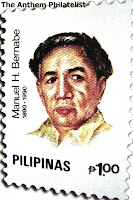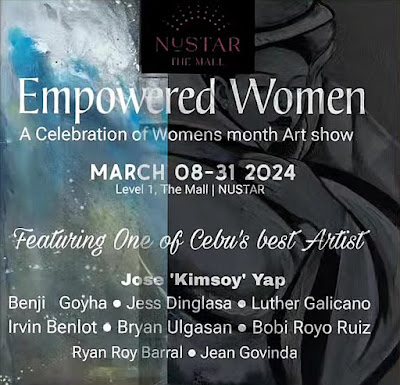Jesus Balmori on Stamps

Jesus Balmori was a renowned Filipino Poet and journalist in the Spanish language. His column Vida Manileña was written in verse and appeared in the Spanish newspaper La Vanguardia under the pen-name Batikuling. He won the Commonwealth Literary Awards in 1940 for his poetry collection entitled Mi Casa de Nipa.
Jesús "Batikuling" Balmori (January 10, 1887 – May 23, 1948) was a Filipino Spanish language journalist, playwright, and poet.
Jesús Balmori was born in Ermita, Manila on January 10, 1887. He studied at the Collegio de San Juan de Letran and the University of Santo Tomas, where he excelled in Literature. He was married to Dolores Rodríguez. Joaquín Balmori, a pioneer labor leader of the foremost organizer of Labor unions in their Philippines, was his brother.
In his early years, Balmori was already gathering literary honors and prizes for poetry. In a Rizal Day contest, his three poems, each bearing a different pen name, won the first, second, third prizes. Later, he figured in friendly poetical jousts, known as Balagtasan (in reference to Tagalog poet Francisco Balagtás), with other well-known poets in Spanish of his time, notably Manuel Bernabe of Parañaque and the Ilonggo Flavio Zaragosa Cano, emerging triumphant each time. Before the war, under the pseudonym "Batikuling", Balmori wrote a column called "Vida Manileña" for Vanguardia, a daily afternoon newspaper. It was a trenchant critique of society’s power elite, showcasing his gift for irony and satirical humor, as well as serious verses. After the war, he wrote a similar column, "Vida Filipina", for the Vox de Manila. However, the number of Spanish-speaking readers was already diminishing by that time. It was his work as a lyric poet, however, on which his fame and reputation rested.
In 1904, when he was 17, he published his first book of verses, Rimas Malayas; it was noted for its spiritual and nationalistic themes. A second volume containing his satirical verses, El Librode mis Vidas Manileñas, came out in 1928.
In 1908, his poem "Gloria" was adjudged first prized winner in a contest sponsored by El Renacimiento. In 1920, another poem, "A Nuestro Señor Don Quijote de la Mancha", received the major award in a contest promoted by Casas de España. He reached the pinnacle of his success as a poet in November 1938 when his Mi Casa de Nipa, a collection of his best poems, gave him the first prize in the national literary contests held under the auspices of the Commonwealth Government, as a part of its third anniversary celebration.
Critics began to notice his literary skills more when he joined a contest sponsored by the newspaper El Renacimiento in commemoration of Rizal Day. Three poems of his poems won. These were "Specs", "Vae Victis" (Woe to the Victor), and "Himno A Rizal" (Hymn to Rizal).
In 1940, his Mi Choza de Nipa (My Nipa Hut), another volume of poetry, won grand prize in a contest sponsored by the US-sponsored Commonwealth Government.
He wrote three novels: Bancarrota de Almas (Failure of the Soul), Se Deshojó la Flor (I Tear The Pages Out of The Flower), and Pájaros de Fuego (Birds of Fire) which was completed during the Japanese occupation. The themes of these novels revolved around the issues of sensuality, the privacy of morality, the existence of God, and man's limitations in society. He also wrote three-act dramas, which were performed to the capacity crowd at the Manila Grand Opera House: Compañados de Gloria, Las de Sungkit en Malacañang, Doña Juana LA Oca, Flor del Carmelo, and Hidra. In 1926, he and Bernabé were awarded the Premio Zóbel for his contributions to Philippine literature.
Balmori was sent abroad as Philippine Ambassador of Goodwill to Spain, Mexico, South America, and Japan. In Spain, Generalissimo Francisco Franco decorated him with the Cross of the Falangistas.
He was traveling in Mexico when he suffered partial paralysis. He died of throat cancer on May 23, 1948, shortly after writing his last poem, "A Cristo" (To Christ), which he dedicated to his wife. At the time of his death, he was a presidential technical assistant and a member of the Philippine Historical Research Committee.
The stamp was issued on December 28, 1987.






